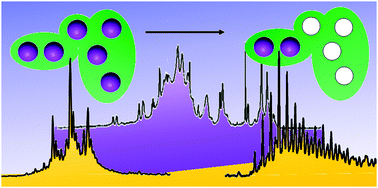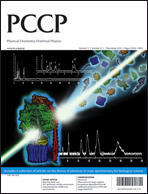Zinc transfer from the embryo-specific metallothionein EC from wheat: a case study†
Abstract
The direct observation of binding and release of spectroscopically silent metal ions such as Zn2+ and Ca2+ by proteins has been challenging before the advent of native electrospray ionisation mass spectrometry. This report highlights the powerful capability of ESI-MS to provide insight into metalloprotein speciation that is independent of any spectroscopic property. Using the zinc-binding plant metallothionein EC from wheat as a study case, we show that ESI-MS is unique amongst other techniques in capturing intermediary metallospecies that evolve during the course of metal transfer to the chelator EDTA, as a model reaction to mimic the biological function of the protein as a zinc donor. Zinc release from the two-domain protein EC appears to be extremely rapid and non-cooperative, and progresses with loss of one zinc ion from the fully loaded Zn6 species, and a transient build-up of Zn5 and Zn4 species, which further react to give species with 0-3 zinc ions bound. 1H NMR data has provided further insights into the different behaviour of the two domains upon metal depletion.

- This article is part of the themed collection: Advances in mass spectrometry for biological science

 Please wait while we load your content...
Please wait while we load your content...